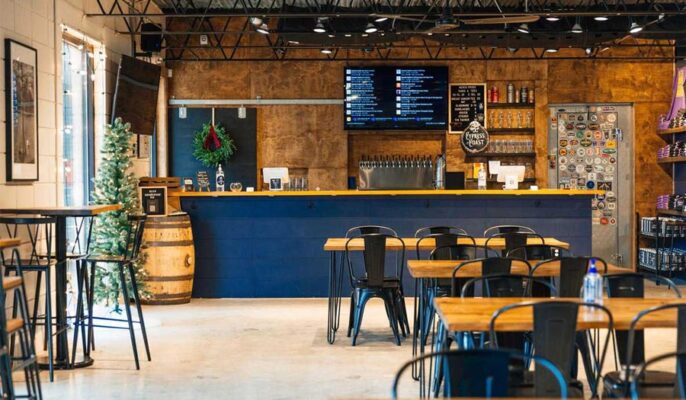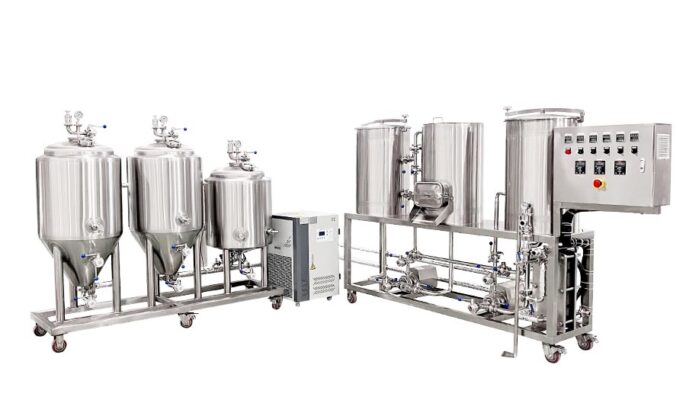Starting a nanobrewery can be exciting and rewarding at the same time, but it requires careful planning and investment in the right equipment. A nano brewery is the ultimate goal for many home brewers. Starting a nano brewery is a big decision. Sell enough beer to make your production brewery viable without the complications of running a large brewery. As with any business, turning your brewing hobby into a nanobrewery isn’t easy, but it’s possible in most areas.
Nano Brewery Introduction
A nano brewery is a brewery that produces no more than 15,000 barrels per year or no more than 3 barrels per batch. These microbreweries produce on a smaller scale and at lower costs, making them popular among budding entrepreneurs. Starting a nanobrewery can cost between $10,000 and $70,000.
Costs range , as many different factors determine the cost of setting up a nanobrewery. Your vision for your brewery business will determine the price you pay.

Nanobrewery vs. microbrewery
As you scale, different rules impact your brewery business. That’s why understanding the differences is crucial to starting a proper nanobrewery. As the Brewers Association explains, a microbrewery is a facility that produces fewer than 15,000 barrels of beer per year and sells at least 75 percent of its beer off-site. Most small breweries sell their drinks , although some ship small quantities across the country.
Most nanobreweries are pub breweries, but with smaller drink sizes than usual. It’s not uncommon for nanobreweries to produce less than 5,000 barrels per year, although the volumes are too low to be a viable business model.
Jak založit nanopivovar?
Know your local laws
This is the first real step in starting a nanobrewery, and intuitive familiarity with the area isn’t enough. Area laws may prohibit brewery operations below a certain size or at any size. You also need to have a good customer base in the area. You also need to sell pints of beer to make a meaningful income. If you can’t sell by the pint, you won’t be successful. Selling to the public is often more efficient than shipping to distributors, all whom hope to receive a share of the profits and sell at a low enough price to compete with others.
Get necessary permits and licenses
To operate a nanobrewery, you must get the necessary permits and licenses to operate a nanobrewery. you’ll need a federal brewer’s notification from the Alcohol and Tobacco Tax and Trade Bureau (TTB), state and local alcohol licenses, and a business license. Consulting an attorney or expert can help ensure you meet all legal requirements.
Naučte se podnikat
Setting aside time to take courses or study on your own can help you learn how to run a business. Make sure you understand local zoning laws, licensing and accounting to keep your brewery legal. Running a business requires a lot of paperwork, so you can’t spend an entire day brewing and serving drinks. Learning how to manage time can also be helpful.
Buy brewing equipment and ingredients
Pivovarské zařízení
To start your nanopivovar, you’ll need a variety of equipment to brew and package your beer. Necessary brewing equipment includes:
- Varný kotel: používá se k vaření mladiny, tekutiny získané během rmutování.
- Mash tun: Nádoba používaná k míchání rozdrcených zrn s horkou vodou za účelem získání zkvasitelných cukrů.
- Fermenter: A container where wort and yeast are mixed for fermentace and sugar is converted into alcohol.
- Zdroj tepla: hořák nebo elektrické topné těleso používané k ohřevu varné konvice.
- Chladicí systém: Chladič mladiny, který se používá k ochlazení mladiny po varu před jejím přenesením do fermentoru.
- Dezinfekce a čištění zařízení: nezbytné pro udržení hygieny a prevenci kontaminace.
- Measurement and testing tools: hydrometer, thermometer and pH meter for monitoring the brewing process.
- Zařízení pro stáčení do lahví nebo sudů: používá se k balení hotového piva.
Brewing quality ingredients
The quality of your beer depends on the quality of the ingredients you choose. To ensure your beer has exceptional flavor and aroma, look for top-notch malts, hops, yeast and water. Choose sourced ingredients to create unique regional flavors while supporting the local economy. By focusing on high-quality ingredients, you can take pride in delivering quality products to your customers.
Marketing your nanobrewery
- Create a strong brand identity for your nanobrewery that reflects your vision and the personality of your beer.
- Use social media platforms and brewery websites to connect with potential customers, share updates on new products and promote events.
- Form partnerships with local bars, restaurants and retailers to sell your beer. Attend local events and beer festivals to showcase your beer and network with other industry professionals. Can help improve the reputation and influence of nanobrewery.

Brew better
Unless you’re already a pro, you’ll need to learn how to brew great beer to attract people. The reason this isn’t top of mind is simple: bad business practices will ruin your nanobrewery faster than bad beer. That’s why you should think of it as a business first and a brewery second.
As a homebrewer, it takes several years of practice to get to the level of starting a nanobrewery. You can reduce this by getting a job at an existing facility and learning brewing skills from professionals in a commercial brewing environment. But, large commercial breweries don’t have the same equipment that you use, so you’ll still need to practice with actual equipment.
Prepare for bad batches
Even professionals produce a bad batch. there’s something wrong with the grain, or it’s been sitting in the machine too long. The brewing process is a science, but it’s easy to make mistakes. put, bad batches are inevitable. Of course, it’s possible to keep their numbers to a least, and it’s unrealistic to assume that every batch of beer you brew is a quality beer.
Běžný problém
How much does it cost to start a nanobrewery?
Startup costs can vary depending on how much equipment you already have and how you’re trying to run your business. Starting a nanobrewery can cost between $10,000 and $70,000.
Can beer brewed at home be sold?
You can’t brew beer at home and sell it to local restaurants. In most cases, you can’t even take beer out of your home unless you deliver it to an acceptable venue, which is usually a place that doesn’t serve drinks produced under a liquor license.
Local laws and regulations of the craft beer industry may vary, so if you are unsure whether brewing is acceptable in the area where you plan to brew, consult a local attorney.
How much money can you make per barrel?
Actual revenue varies depending on what the local market can support. The higher you can set your price, the better. Assuming a standard 16-ounce glass and about a 3/4-inch beer tip, you’ll get at least 130 pints per keg. At $4/pint, the profit per barrel is approximately $520, not including any overhead.




